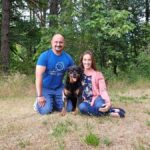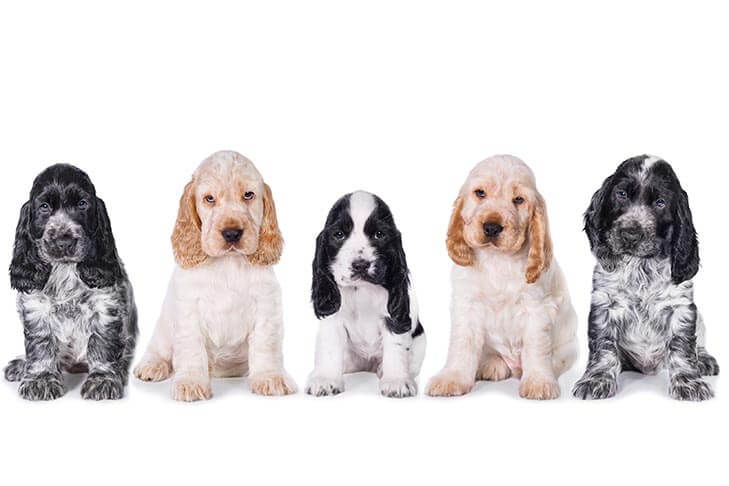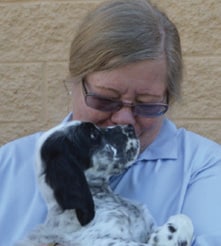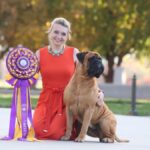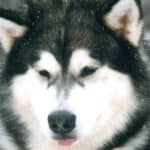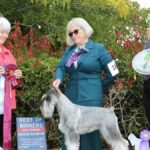Interview with Sporting Group Judge Karen Ericson.
1. Where do you live? How many years in dogs? How many years as a judge?
2. What is your original breed? What is/was your kennel name?
3. Can you list a few of the notable dogs you’ve bred? Any performance or field titles?
4. How important are Performance and Companion titles in a Sporting Dog?
5. Have you judged any Sporting Breed Specialties?
6. Do you find that size, proportion, and substance are correct in most Sporting breeds?
7. Is breed-specific expression important to you as a judge? Can you offer some examples?
8. What are your thoughts on the current grooming practices among the coated breeds?
9. Are the Sporting breeds in good shape overall? Any concerns?
10. In your opinion, how do today’s exhibits compare with the Sporting Dogs of the past?
11. Why do you think the Sporting breeds make up a large portion of the typical show’s entries?
12. Just for laughs, do you have a funny story you can share about judging the Sporting Group?
Sporting Group Judge Karen Ericson
I was born in New Jersey and spent my first years on Long Island. My family lived in the Hamptons, which were not at all glamorous at the time. There were duck and potato farms, and an Indian Reservation. My family moved to New York City and I lived there until graduating from college. It was there that I began showing dogs. While in high school, I worked for a pair of professional handlers in Rye, New York, who specialized in Retrievers. In 1971, I moved to Palo Alto, California, and took some time off from showing to begin my family and finish a Master’s Degree in Public Administration. When the kids were old enough, they showed in Juniors and were part of the typical motorhome show family. My sister, Sandi Olsen, joined them, and together they showed and bred mainly English Cockers. Sandi is also an active judge and started in Juniors along with our other sister, Pam. Professionally, I worked for the U.S. Geological Survey as a seismologist until I had an offer to teach at the University of San Francisco, where I ultimately earned my Doctorate in Education and became an Assistant Dean. In 2005, my husband, Michael, and I decided to move to the Seattle area, which we love. I then taught at the University of Washington and was the Director of Community Based Learning and Research. I met Michael while helping a neighbor’s cow deliver a stuck calf, and he arrived just when, after a lot of effort, I pulled it out! Michael is a true Terrier lover, which led me to also own and breed several Terrier breeds. I am now licensed to judge all Sporting and Terrier breeds as well as Best in Show.
Where do I live? How many years in dogs? How many years as a judge? I live in Carnation, Washington, a small town east of Seattle in the Cascade Foothills. I showed my first English Cocker Spaniel in 1965 and have been a licensed AKC Judge since 1998.
What is my original breed? What is/was my kennel name? My original breed was the English Cocker. I bred them along with my sister, Sandra Olsen. Our kennel name was “Happiness.”
Can I list a few of the notable dogs I’ve bred? Any performance or field titles? CH Happiness Town Constable ECM did some nice winning for us and was Best Bred-By at the National under James Edward Clark. This dog sired a number of Champions and Performance-titled offspring. His sister, CH HCK Strawberry Shortcake CD ECM, produced the first English Cocker with a Master Agility title. In addition, there was CH Happiness Stand and Deliver CD TD. A number of dogs of our breeding have attained Performance titles: CD, CDX, UD, JH, TD, TDX, and many Agility titles. Temperament and biddability were of utmost importance to us in our breeding program.
How important are Performance and Companion titles in a Sporting Dog? I believe these titles are very important. First of all, a dog that is built correctly can have the ability to do what they were bred for—tirelessly. Second, the titles show a willingness to work and the value of a good temperament. I’ve always believed that long after a dog is finished being shown or taking part in performance events, they are family companions, first and foremost. It is crucial, therefore, that they have rock-solid temperaments and are willing to follow direction.
Have I judged any Sporting Breed Specialties? Yes, I have judged a number of them over the years, including Brittanys, GSP, GWP, Goldens, Labs, Tollers, Irish Water Spaniels, English, Irish, Irish Red & White, and Gordon Setters, numerous English Cockers, Cockers, Springers, and Sussex Spaniels, Vizslas, and Weimaraners. I particularly like judging specialties, as it is here that you continue to build upon your breed-specific knowledge.
Do I find that size, proportion, and substance are correct in most Sporting breeds? I feel that a number of Sporting breeds have continued to get larger, contrary to their breed standard. The idea of the “if some is good then more must be better” mentality has led a number of breeds “down the garden path.” Exaggeration has taken place and, in some breeds, it is hard to find a front that isn’t straight, or correct length of loin and leg.
Is breed-specific expression important to me as a judge? Can I offer some examples? It is important up to a certain point. No gamebird ever looked up and said, “I’m sorry, you are too ugly to pick me up!” Of course, you want to see the sweetness in the face of a lovely Golden, the melting expression of a Spaniel, and the intensity of a Pointer on point. Head structure, as clarified in the breed standard, such as ear set, width between and the shape of the eyes, and breadth and shape of the muzzle, all had a functional purpose—and while that should not be lost, it should not be exaggerated either.
What are my thoughts on the current grooming practices among the coated breeds? In general, grooming practices are much too overdone and extreme. Extra coat is a hindrance to a dog working in the field. Some belly coat and feathering is useful to protect the body when hunting in heavy cover, but other than that it is unnecessary. I feel that several breeds have fallen out of favor because too much coat care is required to make the dog desirable as a companion. Blow drying prior to each show ruins the undercoat, which is a required feature in most Sporting Dogs. Open coats are definitely not desirable. There is hope, however!! After the Golden Retriever Club of America released an advisory on correct coats, I have been seeing more Goldens with beautiful, lustrous, natural coats.
Are the Sporting breeds in good shape overall? Any concerns? I think there is room for improvement in many of the breeds in terms of structure, coat, and temperament. Fewer breeds are dual purpose, as they once were. I have the utmost respect for breeders who produce dogs that are correct enough to win in the show ring and perform in the field. There are some that excel in both, and even produce dual champions, but the numbers have definitely diminished.
In my opinion, how do today’s exhibits compare with the Sporting Dogs of the past? I think more breeds produce generic show dogs to top the charts, rather than breed-specific, athletic, well-conditioned, dual purpose hunting dogs. Flash, racing around the ring, and nailing the stack are not what we should be attracted to. Producing the whole package is. Be sure to look at Bo Bengston’s recent posts of Great Dogs of The Past. These dogs look the way they do for a purpose, and I fear that in several breeds that purpose has been lost.
Why do I think the Sporting breeds make up a large portion of the typical show’s entries? Sporting dogs are, in general, very easy to live with. They have more outgoing, friendly demeanors, get along well with people and other dogs, and are easy to train. In general, it is easy to manage having multiples in your household.
Just for laughs, do I have a funny story I can share about judging the Sporting Group? Yes. I can laugh now, but it wasn’t so funny at the time. I was judging a Group in California, and just as I was approaching the Golden Retriever, I stepped on some bees on the ground. Three yellow jackets flew up one of my pant legs and started to sting me. I started jumping up and down, pulling up my pant leg and whooping in pain. The exhibitors and the dogs must have thought I went mad. The Field Rep came and made me sit down and take some Benedryl, and we waited to see if I was going to have an allergic reaction. Fortunately, I did not, and so I went right back to judging as soon as everyone had calmed down.
